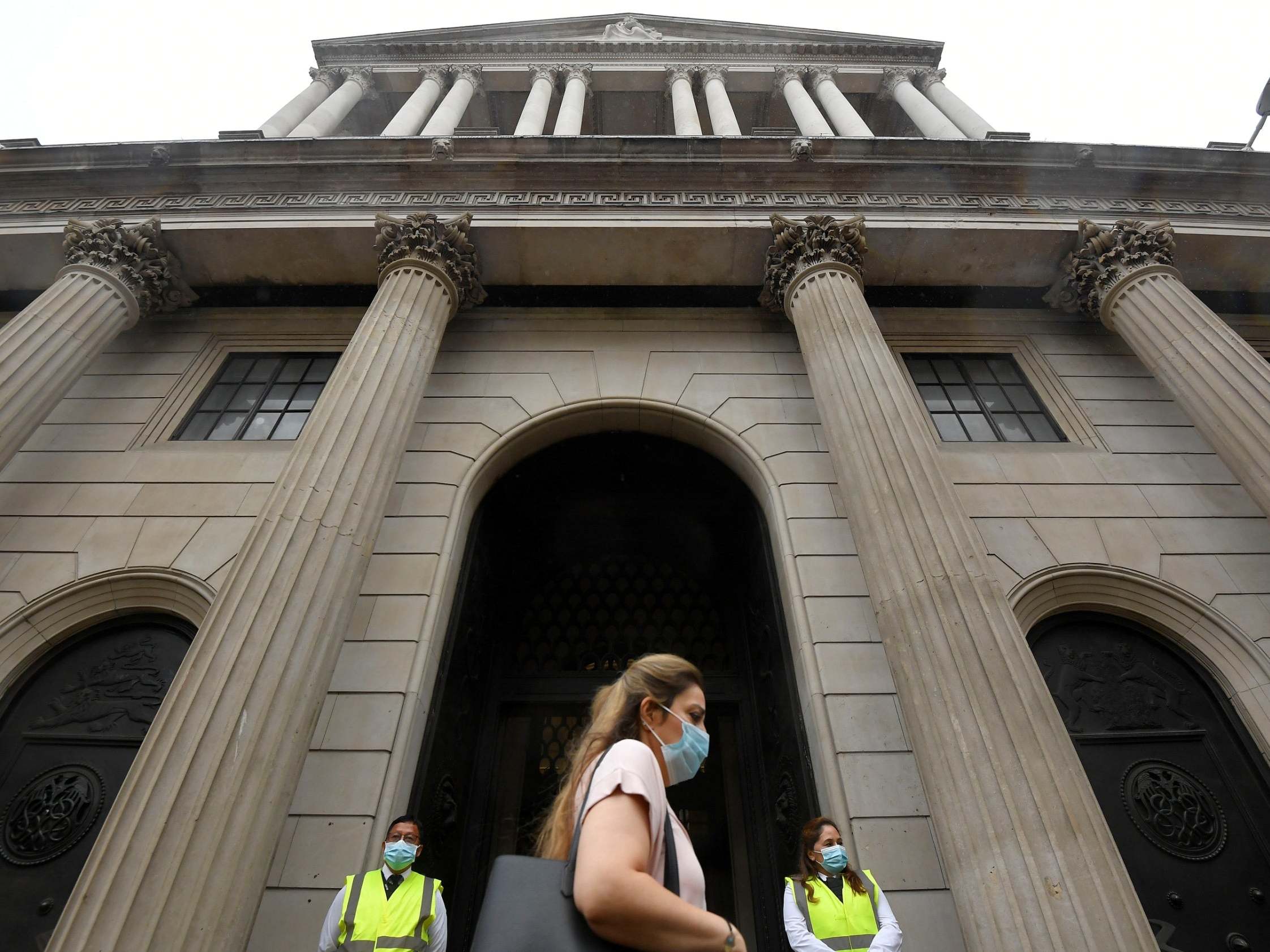Don’t take the Bank of England’s optimistic economic forecasts at face value
Wade into the detail of the new report from Threadneedle Street and a less encouraging picture emerges, says Ben Chu


A smaller recession than first expected. Lower peak unemployment. What’s not to like about the Bank of England’s latest projections for the coronavirus-ravaged UK economy?
On the face of it the new Monetary Policy Report from the bank, released on Thursday, is indeed a refreshing gust of economic optimism at a time when many others are prophesying something akin to economic doom.
Yet wade into the detail of the new report from Threadneedle Street and a less encouraging picture emerges.
Though the fall in economic activity in 2020 is lower than the bank foresaw in May – 9.5 per cent versus 14 per cent – this would still be easily the largest slump since the 1920s.
Moreover, the path of recovery is longer and harder. In May the bank had output bouncing back pretty much to its pre-crisis level by the middle of next year – a phoenix-like resurrection that many saw at the time as somewhat implausible.
Now, however, the bank does not expect GDP to return to its previous peak of activity until the end of 2021.
The bank attributes that weaker recovery to economic “scarring” from more cancelled investment projects by firms amid the all-embracing uncertainty of the pandemic.
And that brings us to that relatively rosy unemployment outlook. It’s important to note that the bank’s projection of joblessness peaking at 7.5 per cent – around 2.5 million – should not be directly compared to the recent central forecast of the Office for Budget Responsibility (OBR) which had joblessness topping out at a frightening 12 per cent, or 4 million.
The Bank of England is using the official headline rate of people actively looking for work, while the OBR is using a measure which adjusts for involuntary inactivity.
Given the drought of vacancies and with many companies unable even to think about hiring, the latter jobless measure almost certainly gives a better signal of the true state of the labour market.
Yet isn’t the overall picture painted by the bank, even given all that, still relatively optimistic? Perhaps, but we should pay attention when the bank’s governor, Andrew Bailey, warns us that the uncertainty around this set of forecasts is higher than ever before.
For all the economic brainpower upon which its analysts can draw, the bank does not – and cannot – know what the path of the pandemic will be in the UK: whether the virus is now firmly under control, or whether we will see a dangerous resurgence of cases that require more disruptive lockdowns.
Given recent events in Spain and the north of England it’s sensible for the bank to conclude that the risks are “skewed to the downside”.
Of course, the Bank of England is not merely a forecaster, it’s also a monetary policymaker.
It can cut interest rates or print money in an attempt to support faltering economic activity. There was no further monetary support from the bank this week, nor was any expected.
The question is whether more stimulus will be forthcoming in the months ahead – additional government bond purchases or even a cut of interest rates into negative territory.
The significance of this new set of forecasts from the bank is that they signal there won’t be, because more monetary easing would push inflation over the mandated 2 per cent target.
The bank, nevertheless, insists it is “ready to act” if necessary – and many analysts suspect it will indeed be called to do so.
A bigger – and more troubling – question, though, is how much beneficial impact monetary stimulus can have in an economy where large numbers of people and companies are unable, rather than unwilling, to spend.
Join our commenting forum
Join thought-provoking conversations, follow other Independent readers and see their replies
Comments